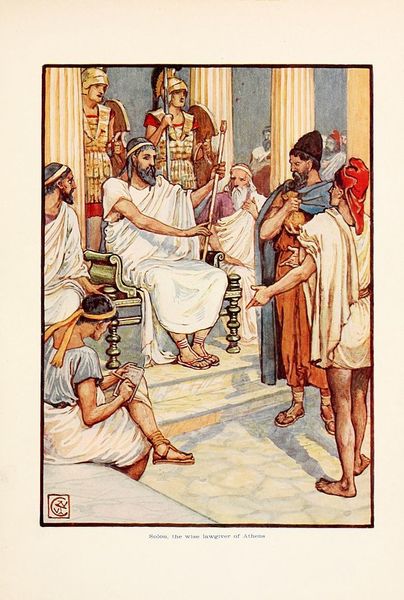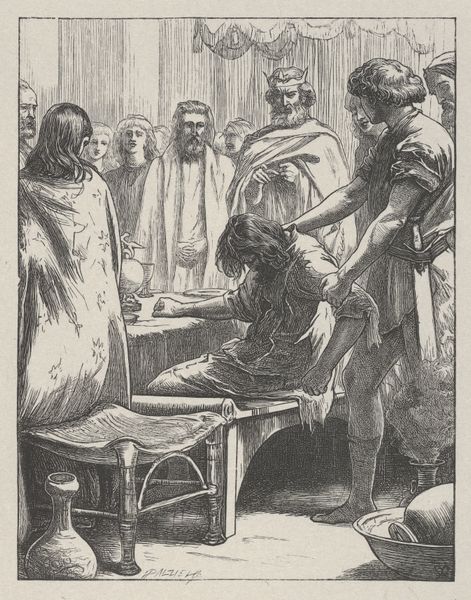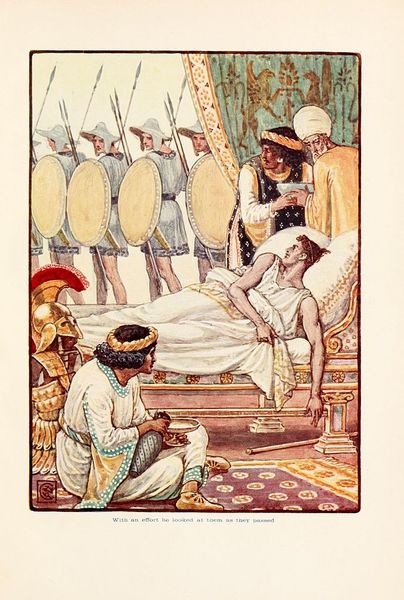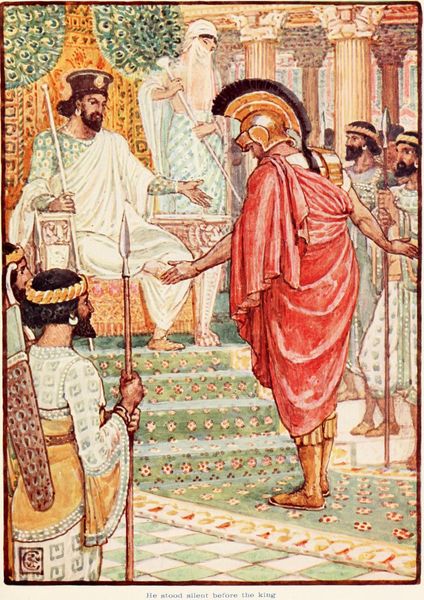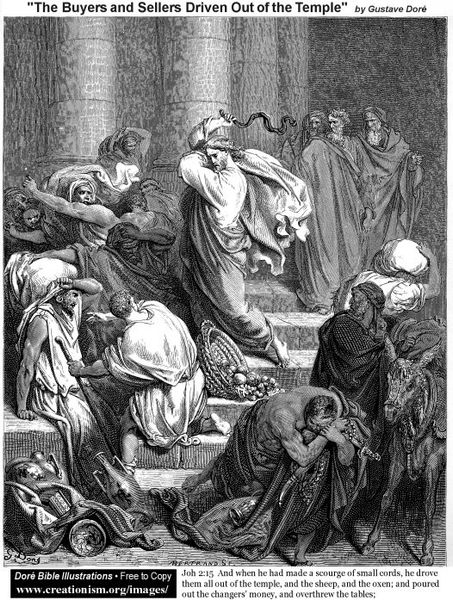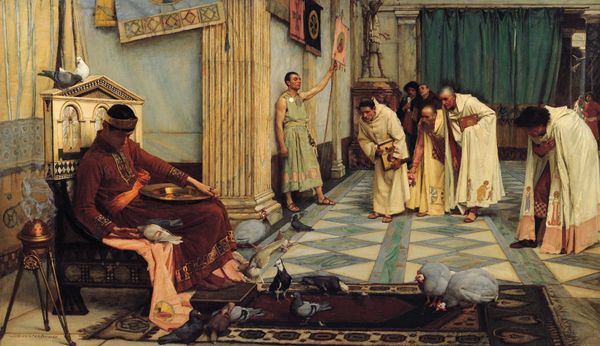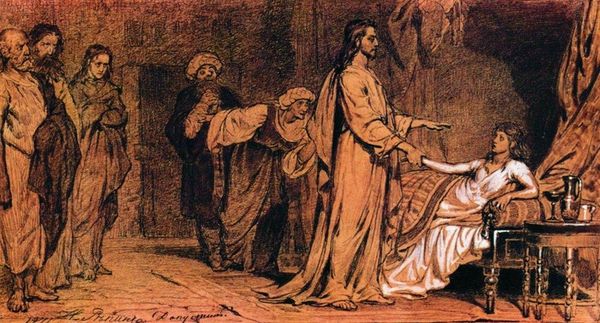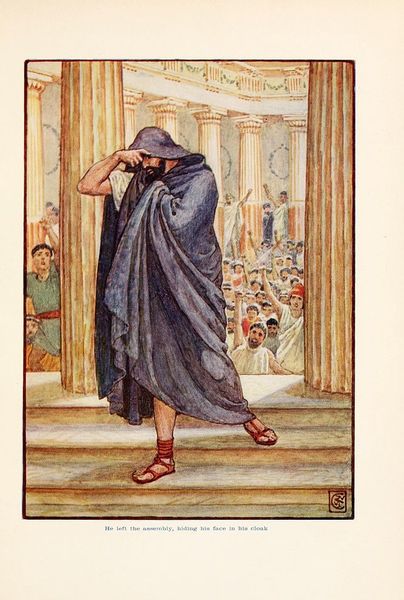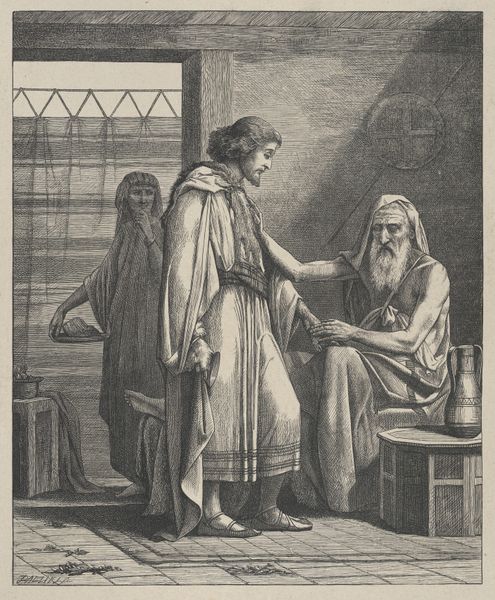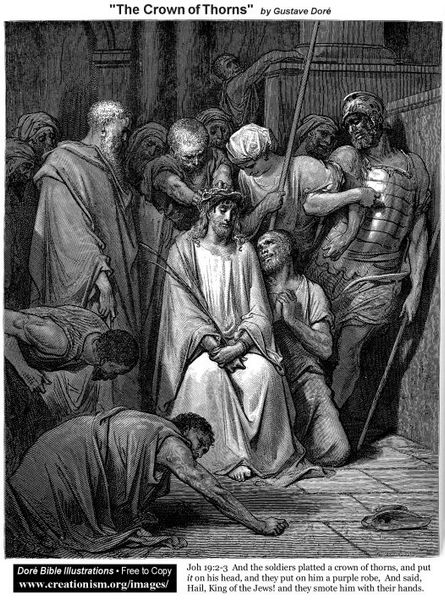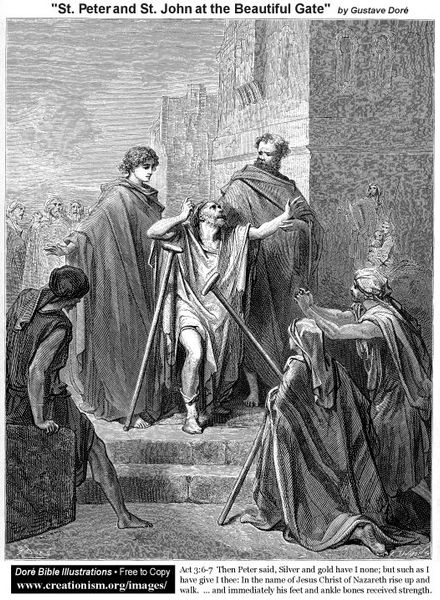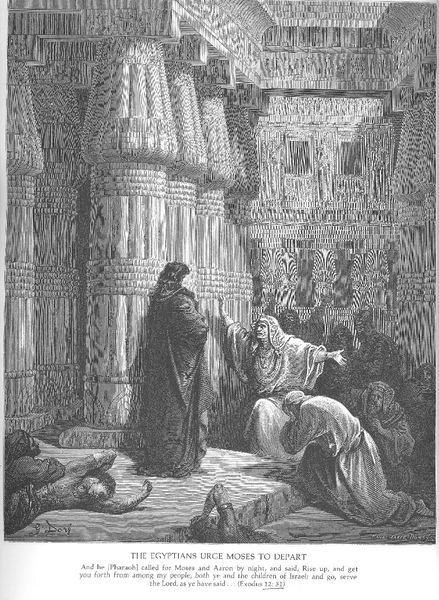
drawing, watercolor
#
drawing
#
narrative-art
#
caricature
#
figuration
#
watercolor
#
romanticism
#
watercolour illustration
#
history-painting
#
academic-art
#
watercolor
Copyright: Public domain
This illustration, by Walter Crane, depicts the death of Socrates, probably made with watercolors and ink on paper. Crane was a prolific artist associated with the Arts and Crafts movement, a design reform movement that privileged handcraft and the dignity of labor. This movement was explicitly a reaction to industrial manufacturing and what they perceived as the low standards of mass production, both in terms of object quality and worker exploitation. In this image, the smooth washes of color create a sense of serene classicism, contrasting with the tragic subject matter. Note the subtle layering of pigments, particularly in the rendering of flesh tones. This attention to detail reflects a commitment to artistry and skill, a hallmark of the Arts and Crafts ethos. The chains on Socrates's wrists are a potent symbol of unfreedom and, perhaps, allude to the constraints of industrial labor that Crane and his contemporaries sought to overcome. By considering the materials, making, and social context of a work like this, we gain a deeper understanding of its full meaning, challenging traditional distinctions between fine art and craft.
Comments
No comments
Be the first to comment and join the conversation on the ultimate creative platform.
